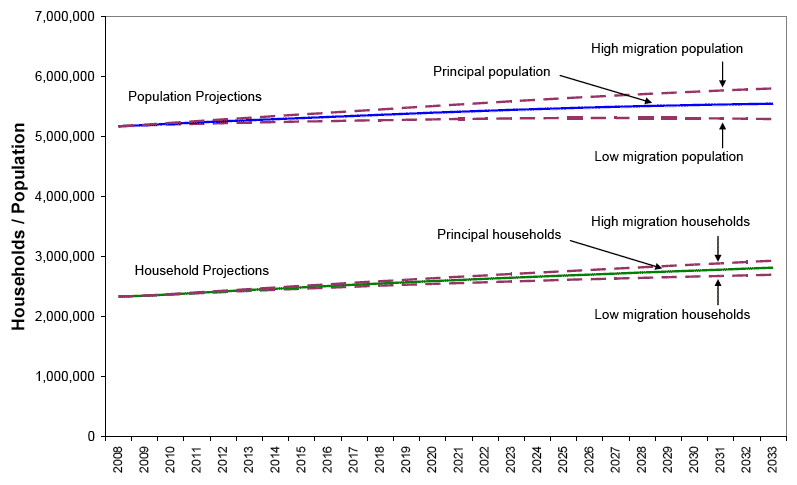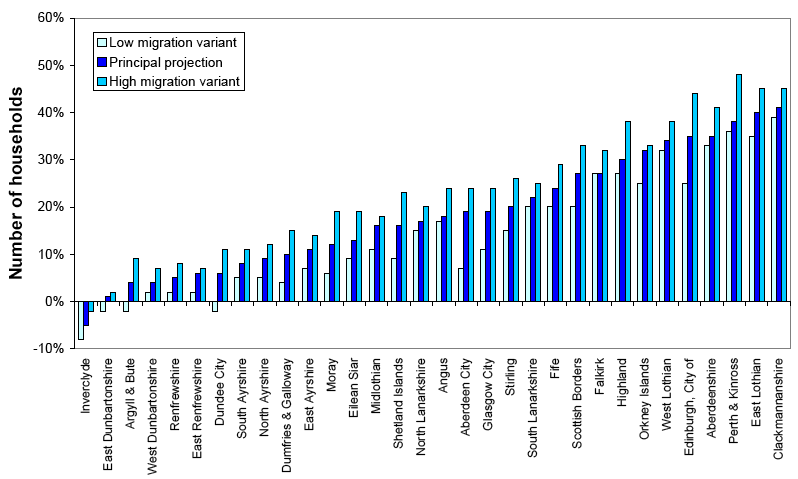
Variant projections provide a broad indication of the sensitivity of the household projections to the demographic assumptions that are used to produce them. The principal household projections are based on the principal population projections produced by GROS which use assumptions about fertility, mortality and migration which are thought most likely to occur over the next 25 years. Variant projections are based on alternative assumptions of future fertility, mortality and migration. For the 2008-based population projections, GROS produced a low migration variant projection in addition to the high migration variant at sub-national level for the first time.
Low and high migration variant projections use the same assumptions about fertility and mortality as the principal projection but assume varied levels of net in-migration to Scotland1. The migration assumptions by council area can be found in Annex C and Annex D of the 2008-based Population Projections for Scottish Areas (http://www.nrscotland.gov.uk/statistics-and-data/statistics/statistics-by-theme/population/population-projections/population-projections-scotland/2008-based )
Migration variant household projections are calculated by replacing the principal population projections with variant migration population projections and keeping all other inputs (communal establishment rates, headship rates, household estimates) unchanged.
The principal household projection shows the number of households in Scotland increasing from 2.33 million in 2008 to 2.81 million in 2033. This compares to 2.70 million households for the low migration variant and 2.93 million households for the high migration variant in 2033. Figure 8 illustrates this along with the projected increase in population for the principal and variant projections.
The average annual increase in the number of households is 14,570 for the low migration variant and 23,920 for the high migration variant, compared to 19,250 for the principal projection.
Table 18 shows the projected number of households for each local authority area under both the principal, low and high migration variant for selected years as well as the percentage difference between the projections in 2033. The low migration variant has the biggest impact on Aberdeen City (where the number of households is 10 per cent lower than under the principal projection).The high migration variant has the biggest impact on City of Edinburgh and Perth and Kinross (where the number of households is seven per cent higher than under the principal projection).
Figure 9 compares the percentage change in households from 2008 to 2033 under the principal, low and high migration variant projections. The impact of low and high migration variants on different local authority areas can again be seen here.
Figure 8: Principal, low and high migration variants, 2008-based population and household projections for Scotland

Figure 9: Percentage change in households 2008 to 2033, using the principal, low and high migration variant projections, by local authority area
